🌟Exoplanets, the discovery of extraterrestrial life [en]
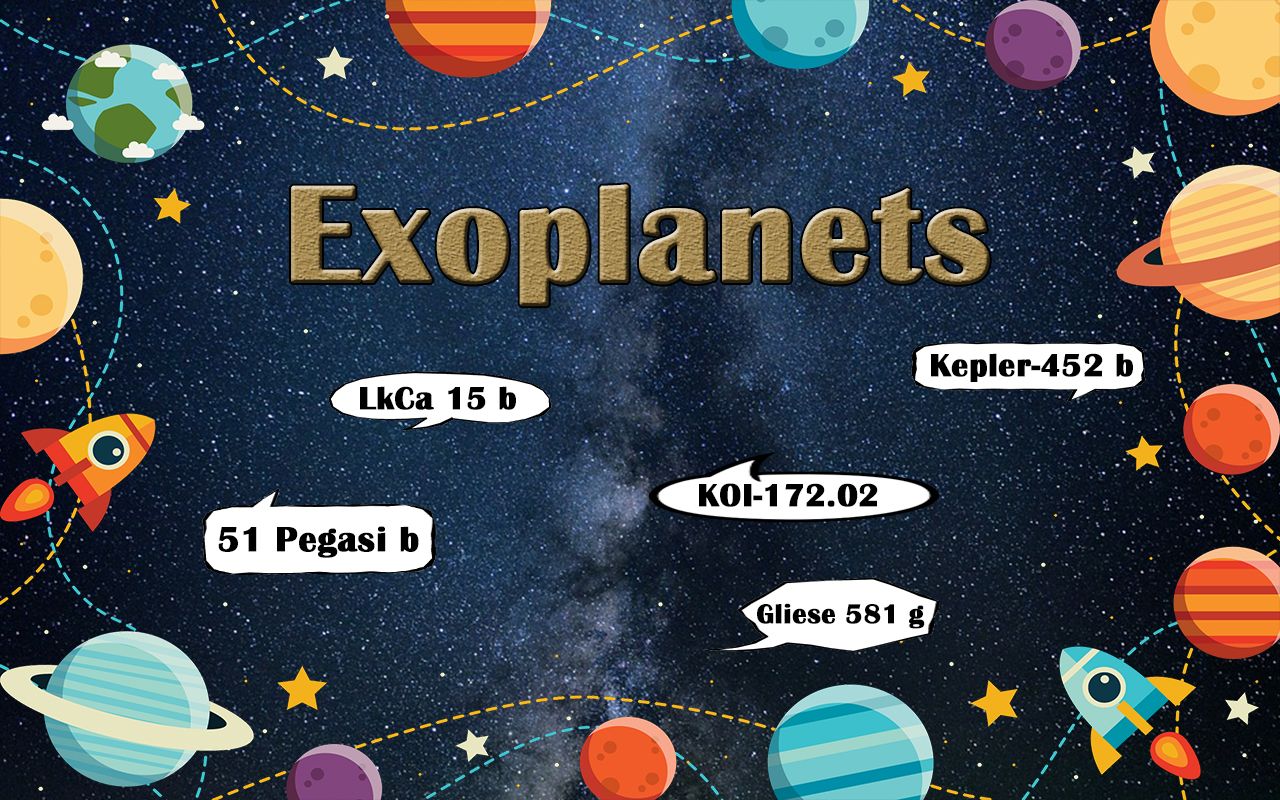
Before we speak exoplanet, let's talk planet.
When pluto was declassified in 2006, The International Astronomical Union (IAU) has defined the characteristics that define a planet.
- A planet is a celestial body in orbit around a sun (star)
- A planet has a sufficient mass to reach a hydrostatic equilibrium (almost round shape) without thermonuclear fusion (if not a star)
- A planet has cleaned up its orbit around its orbit (reason why pluto is no longer a planet, it regularly cuts Neptune's orbit and sails alongside celestial objects just as massive as it is)
Our solar system is thus composed of 8 planets, it is located in the middle of billions of other stars, in the suburbs of our galaxy (the Milky Way).
The Milky Way is an assemblage of stars, gases and dust, which under the influence of gravity forms a relatively flat spherical assembly. When you search Milky Way on Google image, our galaxy is the one being photographed.
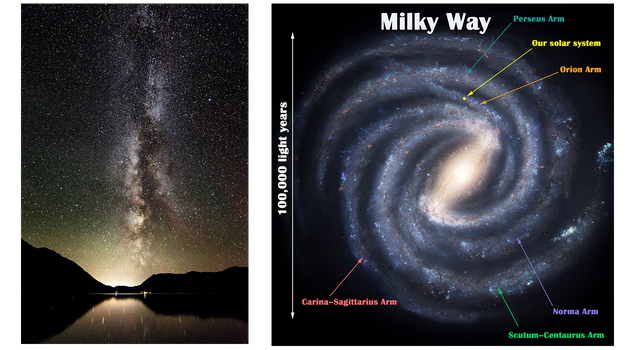
When imagination goes beyond the perceptible
In my article on space telescopes, I refer to Hubble's deep field, or how a small photograph revealed thousands of galaxies in a region of space that was thought to be deserted.
What is an exoplanet
Definition of the IAU : any planet orbiting around a star other than the Sun. Even if the physical characteristics allowing the classification of an exoplanet are not yet clearly accepted by the members, we can consider that it must have the same definitions as the planets of our solar system (above).
Our universe is made up of billions of galaxies and each galaxy is potentially made up of billions of solar systems.
You can consider every star you see at night, raising your eyes to the sky, is a sun, so imagine the number of planets orbiting around each star.
The search for exoplanets is a recent activity, the first was discovered in 1995 by Michel Mayor and Didier Queloz, 51 Pegasi b is therefore a planet orbiting around the star 51 Pegasi in the constellation of Pegasus about 40 light years from the Earth.
We all wondered one day if there were other planets earth in our universe, are we the only living entities in this billion billion stars ? The search for exoplanets is a first approach to solving these questions.
The researchers' dream is to one day be able to discover an exoplanet in the inhabitable zone of its star.
A habitable zone is in exobiology, a zone where life can potentially emerge. Depending on the mass and characteristics of a star, there is a distance where the water can stabilize at its liquid state and thus see the appearance of organic life. Not surprisingly, the land is in the habitable zone of the sun.
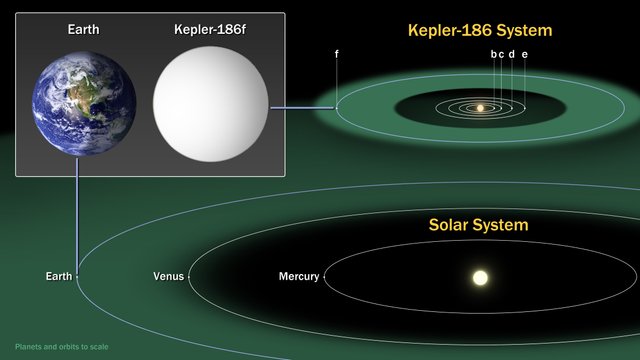 [Source]
[Source]How to detect them
At the moment we are not able to see the exoplanets directly, it is like trying to distinguish a pinhead in front of a bulb several kilometres away.
There are several techniques to infer the existence of an exoplanet, but I will only talk about the two most commonly used methods.
Radial speed
When a planet revolves around a star, the two stars influence each other by their gravity. They revolve around a common axis, which causes a fluctuation in the distance between the star and our planet.
A spectrometer connected to a telescope will detect the star's light fluctuations.
When the light pulls towards the blue, it's because the light frequency gets closer to us and when she tilts towards the red, it's because the star moves away from us.
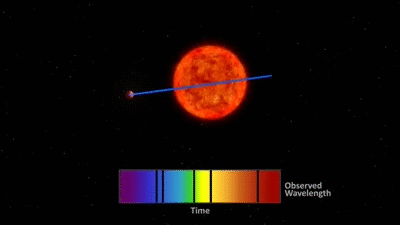
[Source]
A precise analysis of the results allows us to discern a rotation cycle and the gravitational influence that the exoplanet has on its star.
The method of transit
Just as the earth revolves around the sun, an exoplanet orbiting around a star regularly hides the brightness of the star.
The transit method is therefore a photometric analysis of the light intensity emitted by the star.
This type of analysis makes it possible to collect essential information, such as the mass of the exoplanet, its cycle of revolution (the time it takes the exoplanet to turn around its star, 1 year for the earth).
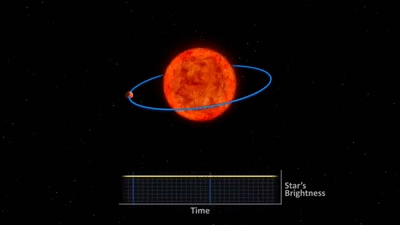
[Source]
Source
NASA full press conference on discovery of 7 Earth-like exoplanets (video)
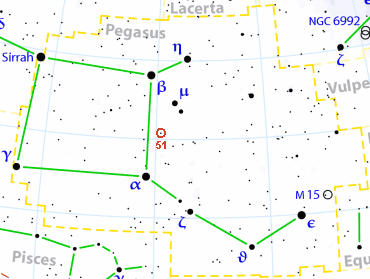
To raise new questions, new possibilities, to regard old problems from a new angle, requires creative imagination and marks real advance in science.
- Albert Einstein
Nice job!
Thank you very much, I'm really glad that you like it.
Not easy when you have few subscribers:)
Thank you very much
Keep up the hard work and you will find your self with many subscribers!
if you write a regular original stuff the followers will come and so will the upvotes
in the beginning you might think that you are writing to no one but if you keep up the articles your reputation will rise and you WILL get noticed...
plus you write in French as well and that is a small community for now... so if you are a well known french writer you will be set... just keep STEEMIN
bonne chance
Thank you very much for your feedback and encouragement.
I also think that the most important thing is to write interesting content is original.
Excellent continuation :)
Over 400,000 members on Steemit now, I hope they all see your great posts also.
Thank you very much for your encouragement. Good continuation
@originalworks
The @OriginalWorks bot has determined this post by @paikan to be original material and upvoted it!
To call @OriginalWorks, simply reply to any post with @originalworks or !originalworks in your message!
To enter this post into the daily RESTEEM contest, upvote this comment! The user with the most upvotes on their @OriginalWorks comment will win!
For more information, Click Here!
Special thanks to @reggaemuffin for being a supporter! Vote him as a witness to help make Steemit a better place!